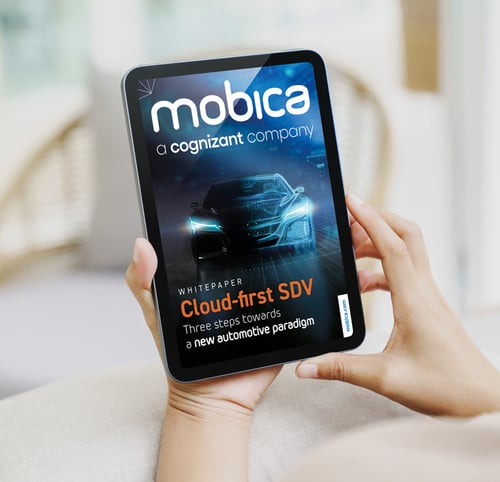Cloud-first SDV: Three steps towards a new automotive paradigm
How the automotive industry can transition to software-defined vehicle development in the Cloud
Supported by Cognizant Mobility.
The automotive industry’s transition to software defined vehicles (SDVs) holds huge promise.
Car owners will be given the ability to update features over the air – allowing them to enhance infotainment systems, download bespoke handling packages, customise comfort settings and more.
At the same time, it will allow manufacturers to move vehicle design and development to the Cloud – enabling them to bring products to market faster, with less expense. They will be able to test new features in simulators (independent of hardware) and continuously improve the safety and security of vehicles while they are in the field.

The transition will not be easy, however.
For traditional OEMs, that are still supporting and developing legacy models, this is a vision that could take many years to achieve. For this to transpire, there are three things that will need to happen first. This includes:
- Industry commitment to a centralised architecture
- Over investment in parallel systems
- Built-in redundancy and regulatory collaboration
In our latest whitepaper, supported by Cognizant Mobility, we take a deep dive into how the whole industry – OEMs, tier 1 suppliers, semiconductor designers and cloud providers – can work together to achieve this cloud-first SDV vision.
Download the WhitepaperExtracts_
![]()
“Ultimately, there needs to be a common framework that allows software developers to create applications without detailed knowledge of specific ECUs. With the automotive industry no longer needing to work with – and to maintain – so many separate ECU platforms, there will be enormous cost savings. A centralised architecture will provide simplicity and enable cloud-first development.”

“Centralising the architecture will involve integrating an ecosystem of potentially hundreds of applications. With the software architecture becoming much larger, it will become harder to keep it bug-free, making it more difficult for regulators to certify systems. While there are already attempts being made to develop safety architecture that can address this problem, there is no doubt that this added complexity poses a massive challenge.”
Contributor_

Przemysław brings over 25 years of invaluable experience to the automotive industry, having collaborated with renowned brands such as BMW and the Volkswagen Group. Since joining Mobica in 2009, he has been instrumental in technical pre-sales and commercial projects with prestigious clients including Vodafone, BT, and the European Space Agency.
Przemysław’s impact reverberates across the automotive landscape, as he actively collaborates with global powerhouses such as OEMs, tier 1 suppliers, and silicon chip manufacturers. With a Master of Science in Engineering from Warsaw University of Technology, Przemysław is a seasoned professional recognized for his expertise in software development tailored for automotive applications. He actively engages with key stakeholders in the automotive sector, driving innovation in areas such as AI, machine learning, electric vehicles, and battery technologies.

Simply fill in your details to download the free whitepaper_
1 Info-Tech Research Group, ‘Flawed Requirements Trigger 70% of Project Failures’, https://www.infotech.com/research/flawed-requirements-trigger-70-of-project-failures
2 Boston Consulting Group, ‘Flipping the Odds of Digital Transformation Success’, https://www.bcg.com/publications/2020/increasing-odds-of-success-in-digital-transformation